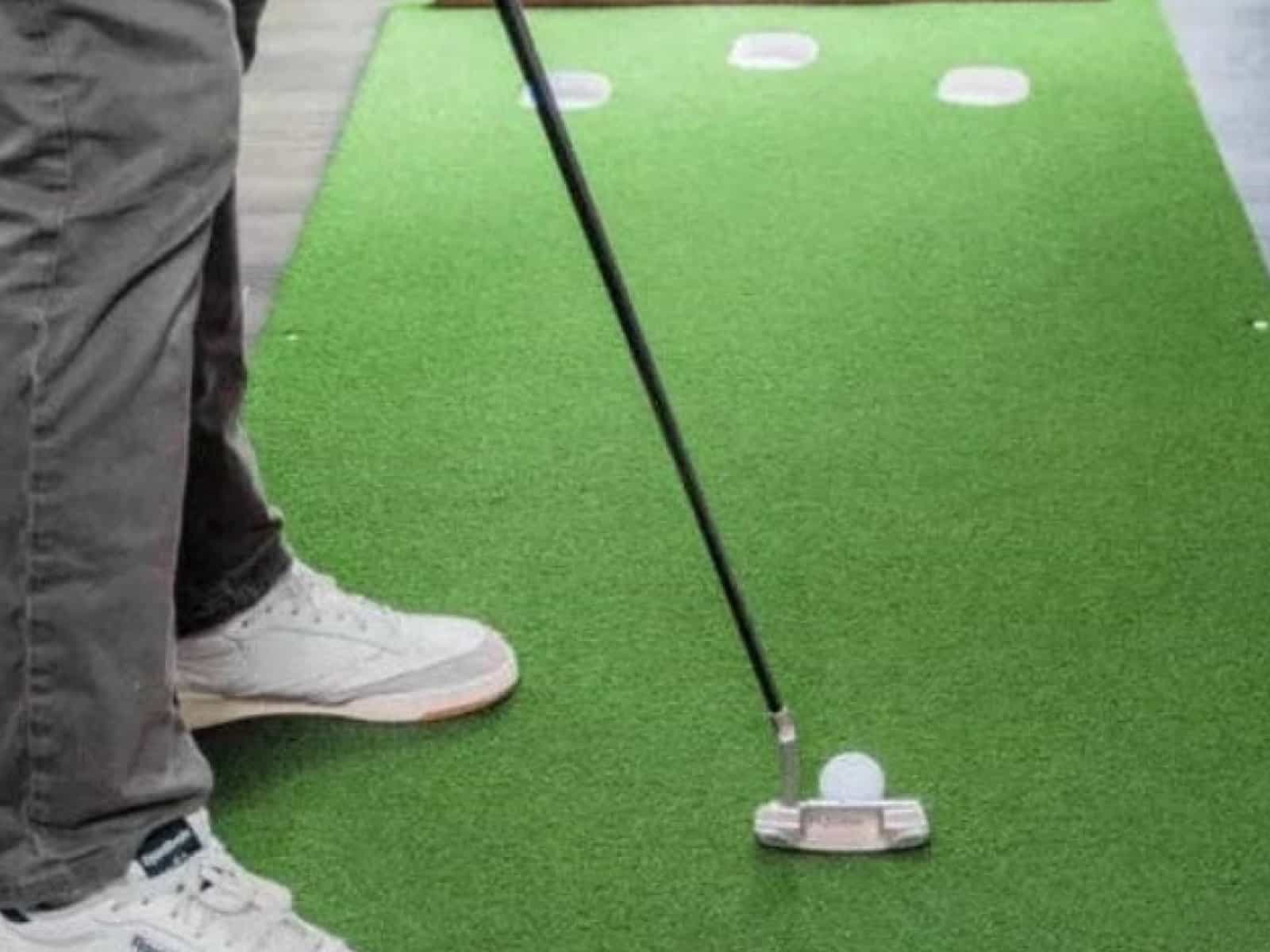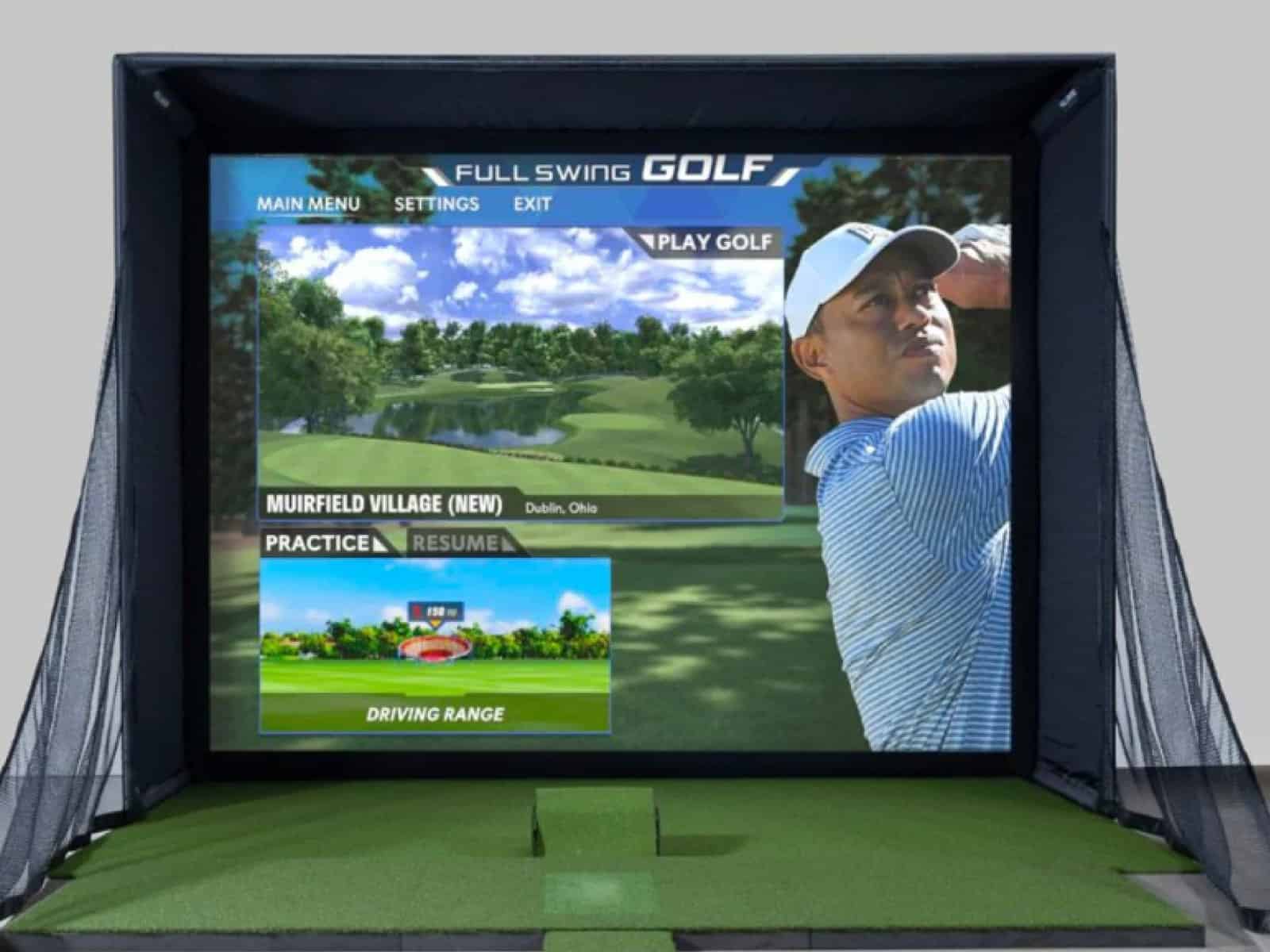With the technology and realism of modern golf simulators improving every year, used systems can offer substantial value and cost savings for home installation. However, purchasing pre-owned simulator equipment sight unseen does pose risks if you don’t inspect and validate the components carefully. Not all used gear performs like new.
This guide will walk you through the key steps for sourcing and vetting used simulator packages to help ensure you get fully functional equipment providing an accurate and immersive virtual golf experience without breaking the bank. We’ll cover what core components to focus on, where to find used inventory, how to test performance and condition, what warning signs could indicate problems, and other tips to get the most bang from your used simulator buck.
Read on to learn how you can confidently purchase and install a high-quality, affordable, used golf simulator in your home without surprises down the road.
Choosing a Used Golf Simulator
When looking to purchase a used golf simulator, the first step is thoroughly researching the brands, models, and features available to understand your options. Some of the major simulator manufacturers to look for on the used market include names like SkyTrak, OptiShot, Full Swing, FlightScope, Foresight, and AboutGolf (among others).
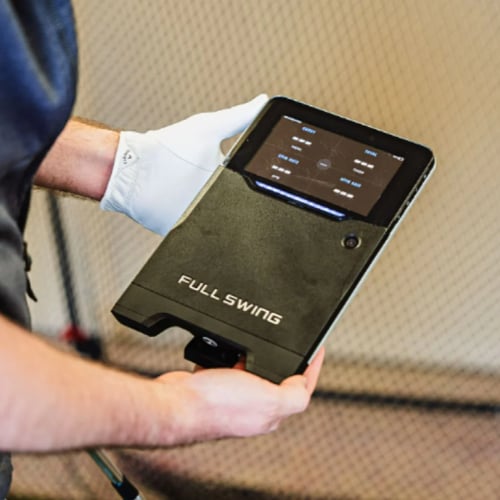
Begin by outlining your available space for the enclosure along with your budget. This will help narrow down suitable new and used simulator models. For an in-depth exploration of the ultimate indoor golf experience, you can visit our top golf simulators guide here.
Next, decide if you want to source a full pre-configured simulator package or piece together the components separately. Complete used packages offer quicker setup but limit customization. Mixing and matching lets you hand-pick preferred tech at each price point. Just ensure all elements will integrate properly before purchasing.
Special Attention Needed for Specific Components
When evaluating used simulator gear, pay particular attention to the display, computer, and sensor hardware which form the tech backbone.
Hitting Screen & Projector
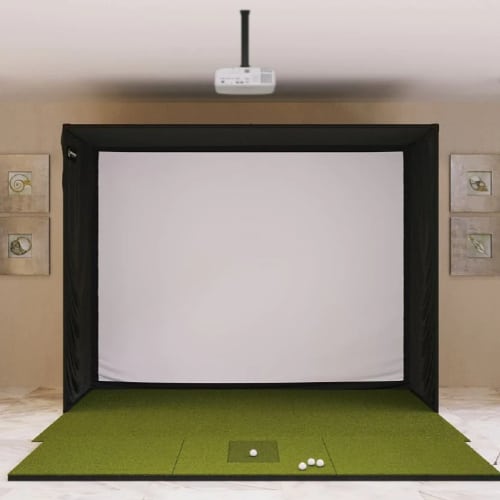
High resolution and brightness are crucial for immersive graphics. Check for any torn or damaged parts of the screen, which may indicate that it needs to be replaced soon. Also, ensure the installation hardware is all included to guarantee proper setup and safety while using the simulator.
In addition, make sure the screen is not discolored or stained, which can affect the projected image and color quality. Also, check that the projector is working properly and projecting a good image on the screen. The projector’s noise level is another thing to check, as a fan that is spinning too fast will be noisy and may indicate overheating issues and potentially a dying bulb.
Computer

Processor speed, RAM, and graphics card impact performance especially with HD graphics and sensor data processing. Confirm specs meet software requirements. Also, stress test the computer to ensure stability; you can use tools like Cinebench, OCCT or Prime 95 to test the CPU, and something like Furmark or Unigine Heaven.
The RAM can be tested using tools like Memtest 86. Some software can test all the components at once; these include AIDA 64 and 3D Mark.
Failure to pass the tests (like tests stopping, system hanging or getting blue screens) may indicate instability or even faulty hardware.
Sensors / Tracking System
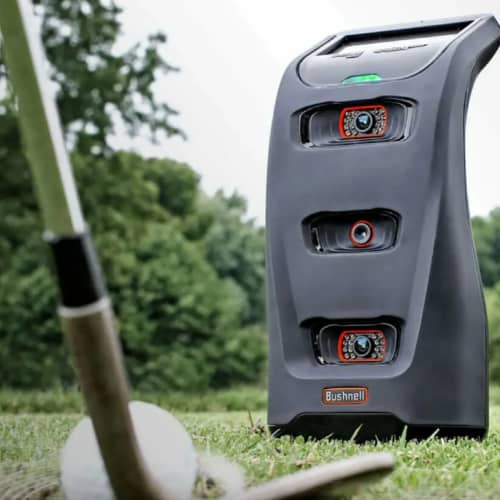
Test radars and optical sensors are included in launch monitors to track golf ball flight and swing data accurately. Depending on the technology and the specific launch monitor, you can expect certain data points with varying accuracy (based on the price of the launch monitor).
Validate that swing data metrics align with your real club distances and ball speeds. Any slight variations are normal, as no tracking system can achieve 100% accuracy; still, big differences in the numbers you get from the tracking system with your real-life performance might indicate faulty hardware.
Make sure the tracking system is properly positioned and well-calibrated before testing for accuracy. If they still give you erroneous numbers, that’s a red flag suggesting you should avoid the hardware.
Other Elements to Check
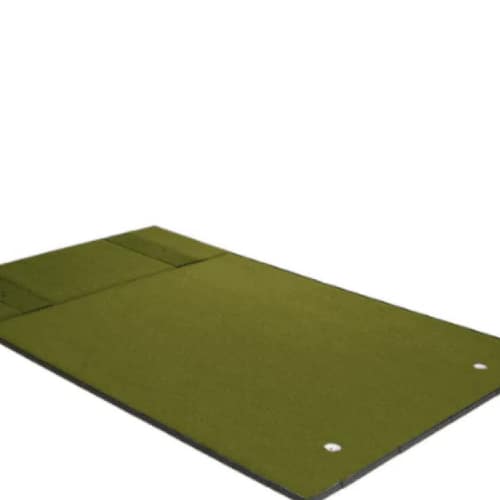
In addition to the core elements of the used simulator package, you should also test and check all included accessories as well. Hitting mats wear over time so inspect turf closely. Audio speakers, lighting, and netting should also be fully functional. Make a list of any parts needing replacement for cost estimates.
Thoroughly researching simulator models along with inspecting the display, computer, and sensors hands-on will ensure you choose a used system that meets your needs, space, and budget. Focus on core tech elements vital for accurate performance and immersive simulation.
Where to Buy Used Golf Simulators?
There are several good options, both locally and online. Each sourcing avenue has its own pros and cons.
Online Marketplaces
eBay is a Large online store with an inventory of both full simulator packages and individual components from sellers worldwide. It provides equipment condition details and buyer feedback. eBay’s Money Back Guarantee provides excellent buyer protection, so if you’re not happy with what you get, you can get a full refund.
Facebook Marketplace provides a more limited local inventory but lets you inspect the gear in person before buying. Generally, you can find lower prices than on eBay. The issue is that nothing is guaranteed, and you need to make sure everything works properly in person.
Craigslist is another online marketplace with vast local entries classified, but you must check the sellers and equipment on your own. The marketplace allows pick-up without shipping.
Local Golf Stores and Pro Shops
Some golf retailers carry a selection of refurbished demo models and trade-in simulators at discounted pricing. They also sometimes offer in-store testing before purchasing. These allow for testing and provide a short warranty period for the used packages, but they cost a bit more than the other options.
Moreover, driving ranges upgrading their gear may sell their old simulator bays and electronics. The condition varies greatly, so you must test the systems extensively before buying. Bear in mind that these systems have undergone a lot of use and abuse.
Golf Pros also usually get leads on local sales through pro shop networks. You also get the chance for expert insight before finalizing your purchase.
Specialty Simulator Resellers
Used sim equipment dealers like Par2Pro and PrecisionSportsSim provide refurbished and used gear at various budget levels. Skytrak also provides certified pre-owned launch monitors for great prices.
Golf Forums and Community Classifieds
Golfwrx Forums, Golf Simulator Forum and others have a very active community as well as a marketplace for used gear. They are great places to find information and deals on golf sims in general.
Additionally, Facebook groups specialized in golf simulators offer classifieds and community-sourcing advice.
Using multiple used gear sources casts the widest net to find ideal equipment in good condition matching your needs and budget constraints.
Inspecting Used Golf Simulator Equipment
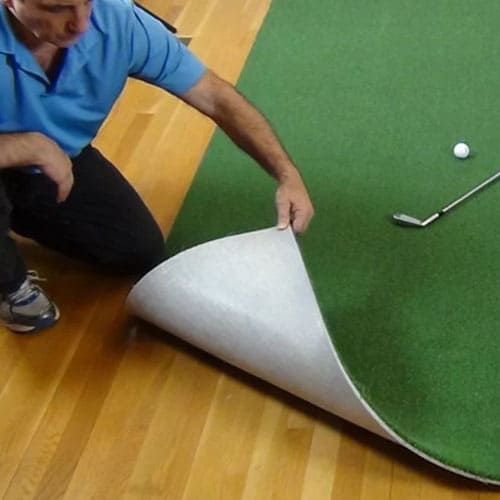
Carefully inspecting all included simulator gear firsthand is a must before finalizing any used equipment purchase. Here are key elements to thoroughly test and examine.
Testing Electronic Components
First, confirm all components like projectors, screens, computers, and sensors turn on and stay powered without issues.Check that the video outputs correctly to screens with no distortion or lag and confirm the speakers (if included) emit sound properly.
Also, try to validate any wired/wireless connections between the simulator elements have connectivity and adequate speeds. Run sensor calibration and performance validation routines to verify accurate data tracking.
Checking for Physical Damage
Look for dents, cracks or defects in metal, plastic, or wood enclosure structures. Inspect the projector and screen for tears, dead pixels, burn-in, or image retention. Try to note any scuffs, scratches, fading, or other exterior cosmetic flaws.
Examining Computer and Tracking Performance

Ensure the computer powers on fully and loads the operating system/software without errors. After that, confirm that the processor speed, RAM, graphics card, and storage meet software requirements.
Also, run simulator software menus and graphics on max settings for 30+ minutes to check for lags, freezes or shutdowns that may indicate issues.
To ensure the tracking system works properly, observe sensors consistently picking up golf balls from all club types and swing angles. Hit shots while comparing simulator metrics like ball speed, launch angle and backspin to real-world averages.
Confirming Accessories
You need to make sure any advertised accessories are included in the package at the time of testing and purchasing. You can do the following:
- Check turf quality and impact absorption. Note any damaged areas.
- Confirm all required cables for video, power, and data are included.
- Verify any other accessories, like the impact and side netting, are in usable shape.
Thoroughly testing all physical, electronic, and software elements of used golf simulators prior to purchase helps ensure you get functional, accurate equipment in good condition. Test and inspect gear on-site before buying whenever possible.
Frequently Asked Questions
The following are some commonly asked questions that we answered to help you make the best choice and ensure you are buying a fully functional used golf simulator.
How much cheaper are used golf simulators compared to new ones?
Used simulator packages typically sell for 50-70% less than new systems. For example, a new SkyTrak package may retail for $2,000-$5,000 while used units commonly sell for $1,000-$2,000 depending on age and condition. Savings vary based on the brand, included components, and wear level.
What are signs a used simulator won’t be accurate?
Signs of inaccurate performance in used gear include sensors intermittently not registering shots, abnormal ball flight trajectories, swing data metrics well above or below your actual averages, significant lag between shots and simulator response, and inability to properly calibrate components.
Is it risky to buy used simulator tech sight unseen?
Yes, purchasing used simulator equipment without thoroughly testing and inspecting components firsthand carries risks of receiving non-functional gear with defects. Always try to evaluate used systems in person prior to buying, if possible. Otherwise, opt for online stores that provide warranty periods on used gear to be on the safe side.
How can I determine if a used simulator computer is powerful enough?
Compare the used computer’s processor speed, RAM, graphics card, operating system, and other specs to the minimum requirements listed for the simulator software version to ensure adequate power for smooth performance. Preferably, you want your computer specs to be higher than the required minimum, which allows you to run the simulation at higher graphics and increase immersion and realism.
Can I upgrade or patch older simulator software versions?
It depends on the manufacturer. Some allow users to purchase software upgrade packages to get the latest features and performance improvements. Others only allow running the version initially bundled with the system. Contact the company to check.
How long can I expect a used system to last?
With proper maintenance and component replacement, expect 5-10 years of life from a used simulator system. Key elements like projector bulbs, sensors, computer hardware, and hitting mats will need periodic replacement every few years.
Final Thoughts
Purchasing a pre-owned golf simulator system certainly presents great potential value, but also risks if you don’t thoroughly validate functionality first. By following this guide’s advice on researching models, inspecting key components like screens and sensors, testing accuracy performance, and looking for warning signs of problems, you can minimize the risks.
Buying used requires more upfront legwork than a new system, but the cost savings will be worthwhile if you do your homework and find a well-cared-for, fully working simulator package. With an immersive, high-performing used simulator ready for installation in your home, you can enjoy years of golf practice and entertainment for a fraction of the price of new equipment.
Just be sure to carefully vet any used gear rather than jumping on deals that seem too good to be true. Taking your time to source and validate a used system will pay off with years of realistic and affordable golf simulation.
If you have any questions, comments or experience with used golf sim components, please share everything in the comments section below. Your feedback will help potential buyers make the best decisions possible.



